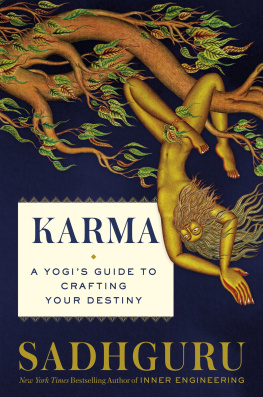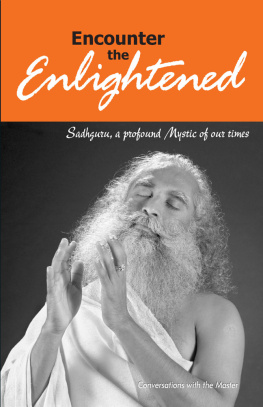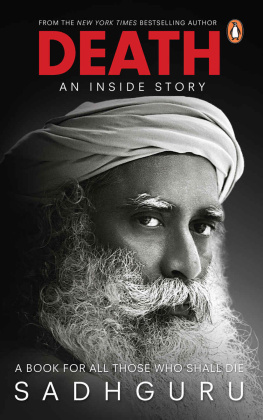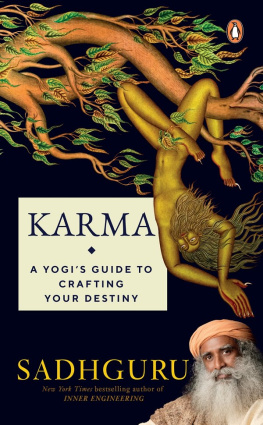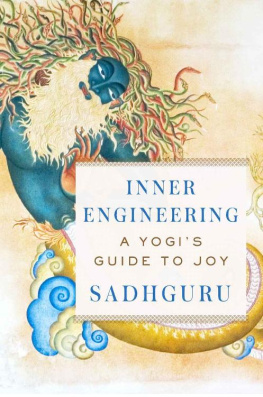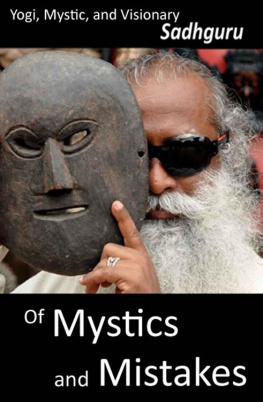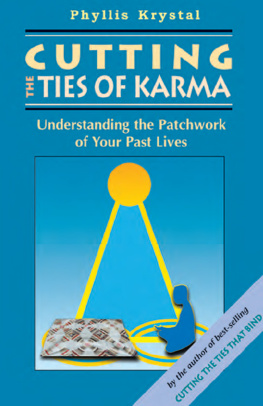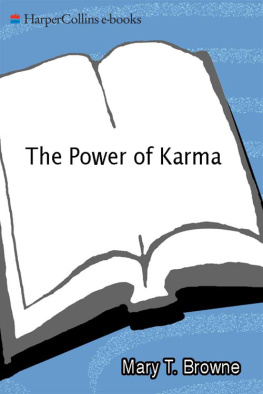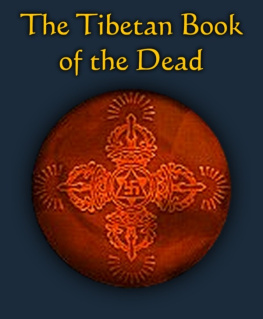The inner journey through an uncharted landscape can be fraught with contradictions of thought, emotion, experience, and action. This book strives to lift the haze of these contradictions in the minds and hearts of all seekers of truth.
A Note to the Reader
The word sadhguru, as I often point out, means an uneducated guru. An uneducated guru does not come from accumulated scriptural information, but from a moment-to-moment inner knowing. I come, therefore, from a place of direct experience, not secondhand knowledge.
My approach to karma, therefore, is notand has never beenthat of a scholar. When I speak of karma, I am not drawing on doctrine. I am drawing on perception. Conceptual knowledge is the way of the academic. Perceptual knowing is the way of the yogi.
Part One of this book explains karmain all its complexity and multidimensionality. It may seem to deal with pure concepts, sometimes challenging ones. But I want to emphasize that these are not abstruse theories but, rather, direct insights into the actual workings of karma.
This is a section for the thirsty. It is for those who have nursed questions over the years, questions such as What is karma? How does it accumulate? What makes the machinery work? When did this whole complicated and crazy cycle begin? It is for those who arent looking for mere user manuals, but for a glimpse into the very mechanism of the karmic wheel.
This section examines how the wheel comes into being and gains momentum. It leads you step by step into the subject of karmawhat it is; how it accumulates; the many ways in which human personality is shaped; the incredibly vast reservoir of memory that every individual carries; the role of volition; the subtle ways in which karma adheres to us even when we seek to free ourselves of it.
Spiritual seekers usually want to shed their karma, but it is important to remember that karma is not our enemy. It is not necessary to eliminate all karma to lead a life of well-being. Indeed, we would not be able to live without karma, for human life is sustained by it. At the same time, karma can become wounding and deeply entangling if we do not learn how to handle it.
The yogic system gives no commandments whatsoever. It leaves you free to choose whether you want to generate positive karma for the future, distance yourself from your karmic package, or dissolve it altogether. Even as this book explores and outlines these various possibilities, the choice is yours.
If you find your foot recurrently crushed under a wheel, the problem is not with the wheel. The problem is that you have no clue how to ride it. The aim of this book is not to reinvent the wheel but to suggest ways to ride it joyfully toward the destination of your choice, secure in the knowledge that you are in control of your own journey.
EPILOGUE
Karma and the Courtesans Jewelry
SUTRA #17
Those who long to leave a footprint shall never fly.
I have often spoken of the traditional courtesans in India who wore an extremely elaborate type of jewelry. Their entire body was swathed in gold and diamonds. The jewelry was so complex that the men who came to them, fired with lust, had no idea of how to take it off. It was such a dense web of chains that, although they tried hard, they could never get the jewelry off.
The ritual was a complex one. The courtesan would encourage the man to have a drink, and then another, and then yet another. He would keep drinking and trying to undo her jewelry. But he grew more and more inept, until he finally fell asleep. This is exactly what she wanted!
What he never guessed was that there was just one pin that kept the whole web of chains together. It was located in a spot that only she knew. If that single pin was pulled, the entire jewelry would fall off. Only she knew that.
Karma is exactly like this.
It is a complex web of chainssome beautiful and studded with exquisite diamonds, some of it just ugly rusted iron shackles. It makes no sense to try to pick the good karma from the bad. This is why spiritual seekers are not interested in acquiring good karma. They just want to drop the entire mess. This means burning up their karma through intense action as well as distancing themselves from it through meditation.
But there is a third way, too.
And this entails knowing the location of the elusive pin. Like the courtesans, if seekers knew where the pin was, they could find their way out of the labyrinth in just a moment. But most spend a lifetime getting more and more entangled in the karmic chains.
Where does this single pin lie?
In eliminating a single question from your life: What about me?
If you are able to completely eliminate this question, you have annihilated the enormous sense of self-significance that most human beings live with. Now you can dismantle the elaborate karmic chains in one swift single stroke. You emerge from the debris of your karma a liberated being.
It is because most people cannot eradicate this question that a guru was considered necessary. A gurus role has always been this: to step in to pull the pin for you when the time is right.
So, Sadhguru, when are you going to pull my pin? I can already envisage that question coming at me from several quarters! So let me add a caveat right away. If you ask this question, it means you are not ready yet to have your pin pulled. If you are in a state where you think your karma is a burden that must be eliminated, you are not yet ready for liberation. Only when you learn to transform every memoryconscious/unconscious, pleasant/unpleasant, beautiful/horrendousinto joy and well-being are you ready.
If you ask for the pin to be pulled when you are not ready, it is not liberation; it is escapism. There is a difference between walking out of the body and committing suicide. Suicide means you want to escape a difficult situation. Walking out of something means your term is over and you are stepping out joyfully. If you escape from prison, you will be on the run for the rest of your life. But if you are freed from prison because your term is up, you are a free man. That is the difference. And it is a big one.
In ancient times, people set sail for distant lands that they imagined were at the other end of the earth. It is only later that they realized the earth was round and that they were only going round in circles.
Traveling the globe can be wonderfully exciting. But at a certain point, one tires of going round in circles. The scenery changes, the weather alters, but there is something deep within a human being that dislikes going in circles. This innate dislike is bound to surface at some time.
The aim of this book is to remind you that there is a way out of circles of repetitiveness. There are many ways to walk the path of karma yogato become a spiritual practitioner capable of walking out of circles into an eternal and imperishable nowness. Some circles can be instantly erased. Some need some more work. Others need some extra outside help. But it is important to do all that you can. The guruwhether in a physical form or notfinally steps in to do whatever remains to be done.
The reason why human beings keep generating karma is that they want to leave a footprint. They are seeking some continuation of their individual identity. Whether it is in terms of personal achievements, relationships, bearing children, or engaging in social causes, they want desperately to leave a dent on existence, attain immortality, live on for posterity.

